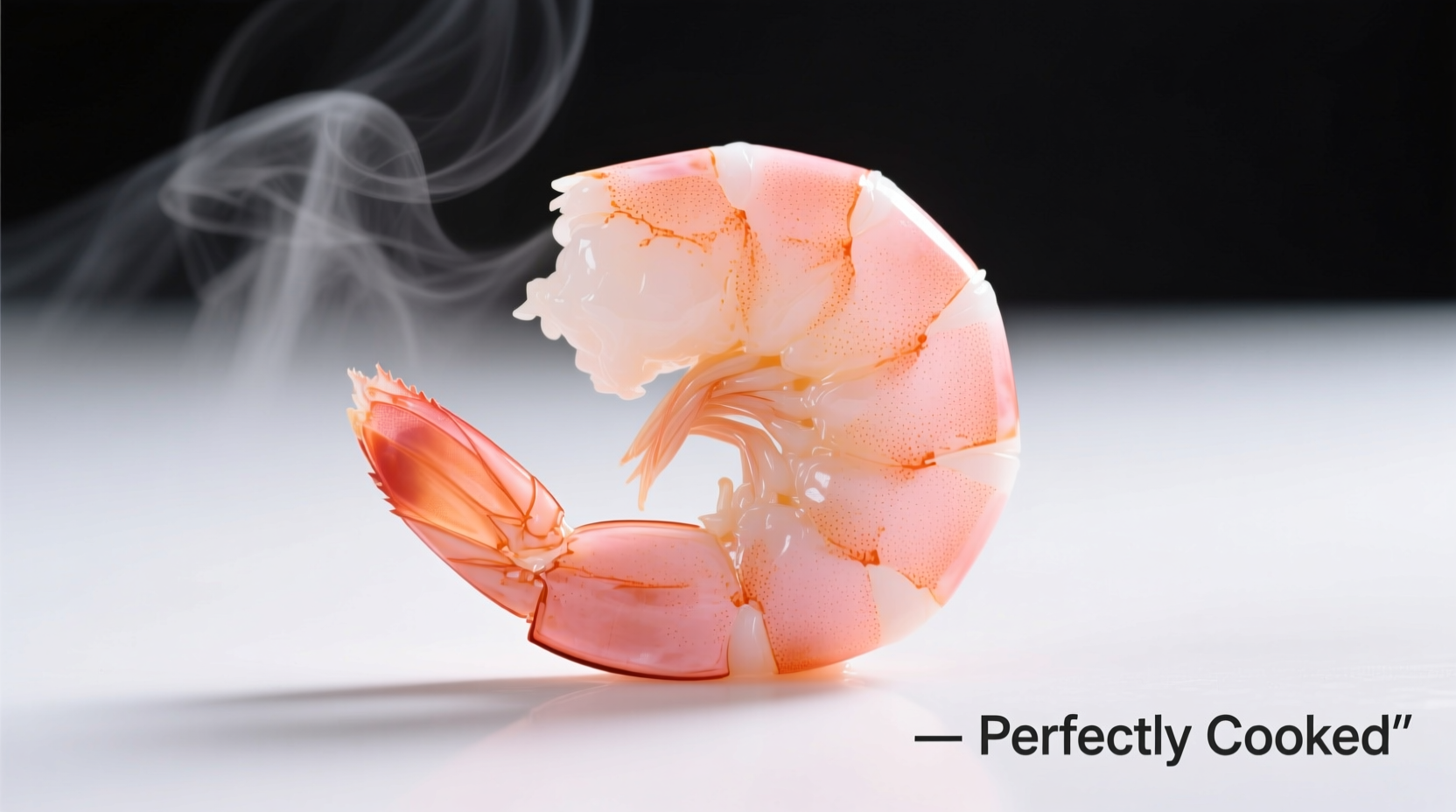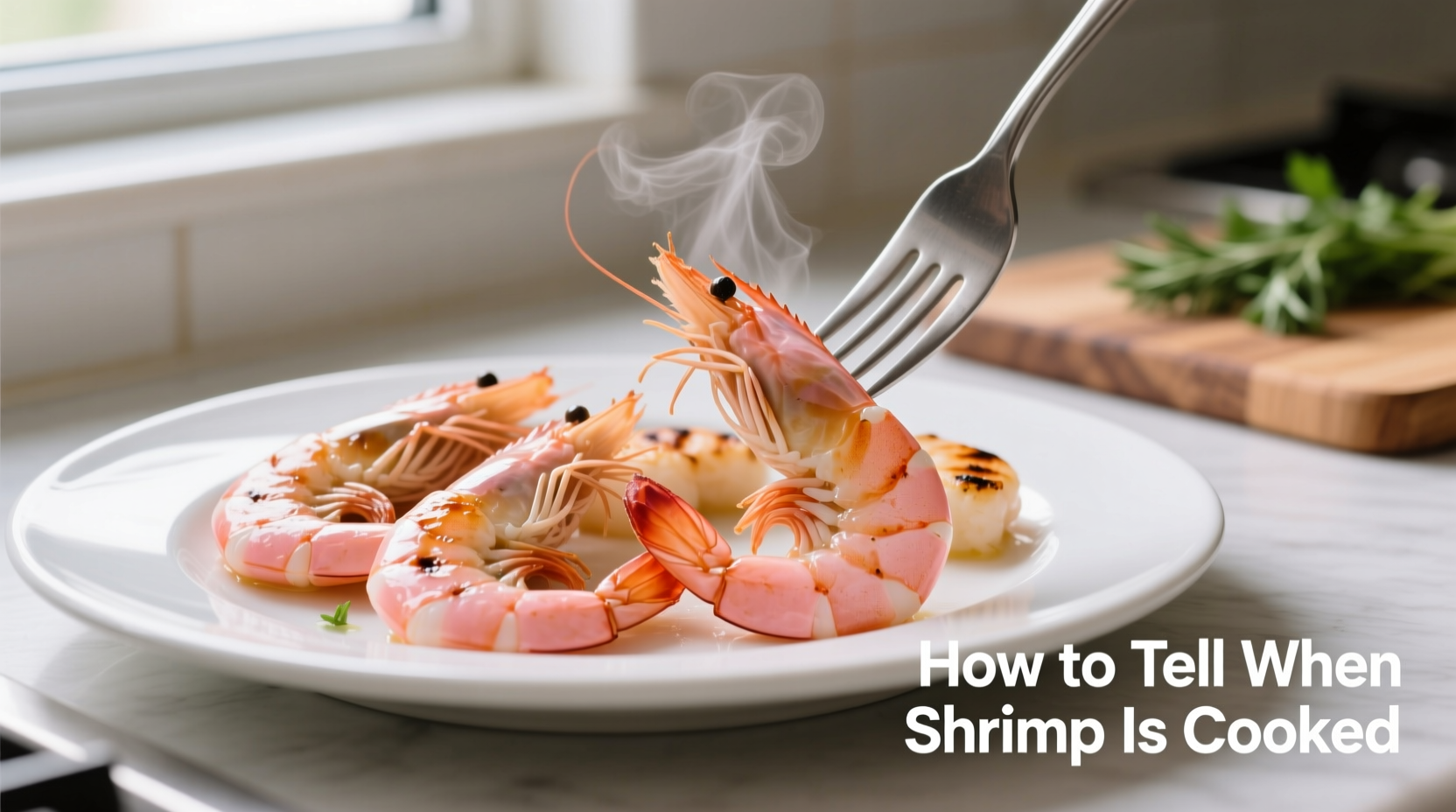Perfectly cooked shrimp delivers that sweet, delicate flavor and tender bite we all crave. Getting it right matters because undercooked shrimp risks foodborne illness, while overcooked shrimp turns rubbery and loses its delicate flavor. Whether you're boiling, sautéing, or grilling, these science-backed indicators will help you achieve restaurant-quality results every time.
Visual Indicators: What Cooked Shrimp Looks Like
The most reliable visual cue is the color transformation. Raw shrimp appears translucent gray or bluish-gray. As proteins denature during cooking, they turn opaque. Properly cooked shrimp shows these visual characteristics:
- Color change: From translucent gray to opaque pink with white or reddish accents
- Shape formation: Forms a loose 'C' shape (not a tight 'O' which indicates overcooking)
- Surface texture: Appears matte rather than glossy
This transformation happens because heat causes the protein structure in shrimp to unravel and rebind, expelling moisture and changing both color and texture. The process typically takes 2-3 minutes per side depending on cooking method and size.

Tactile Indicators: Testing Shrimp Texture
While visual cues help, your fingers provide the most precise assessment. Properly cooked shrimp should feel:
- Firm but yielding: Resists gentle pressure but doesn't feel hard
- Springy: Bounces back slightly when pressed
- Dry surface: No slimy or wet feeling
The "bounce test" is particularly reliable. Using tongs, gently press a shrimp. Perfectly cooked shrimp will spring back to shape. Overcooked shrimp feels rigid and won't bounce, while undercooked shrimp remains mushy.
Cooking Time Guidelines by Method
Cooking times vary significantly based on preparation method. These guidelines apply to medium-sized shrimp (31-40 count per pound) at room temperature:
| Cooking Method | Time for Medium Shrimp | Key Visual Cue |
|---|---|---|
| Boiling | 2-3 minutes | Rises to surface, turns pink |
| Sautéing | 1.5-2.5 minutes per side | Opaque throughout, loose C-shape |
| Grilling | 2-3 minutes per side | Light char marks, firm texture |
| Baking | 8-10 minutes at 400°F | Completely opaque, slightly curled |
Remember these critical factors that affect cooking time:
- Shrimp size: Jumbo shrimp need 30-50% more time than medium
- Starting temperature: Cold shrimp from refrigerator needs slightly longer
- Cooking surface temperature: Higher heat requires shorter cooking time
- Quantity: Overcrowding a pan lowers temperature and extends cooking time
Temperature Verification: The Most Accurate Method
For absolute precision, use an instant-read thermometer. According to the FDA Food Code, seafood should reach 145°F (63°C) for safety. However, shrimp continues cooking after removal from heat (carryover cooking), so the ideal moment to remove shrimp is at 120°F (49°C).
Insert the thermometer into the thickest part of the shrimp, avoiding the tail. The temperature should rise from 100°F to 120°F in about 30 seconds when properly searing. This precise approach prevents overcooking, which happens quickly once shrimp passes 130°F (54°C).
Common Shrimp Cooking Mistakes and How to Avoid Them
Even experienced cooks make these shrimp preparation errors:
Overcooking: The Most Frequent Error
Symptoms: Tight 'O' shape, rubbery texture, opaque white color throughout. Shrimp loses 20-30% more moisture when overcooked, becoming tough. To prevent:
- Remove shrimp from heat when 80% cooked (slight translucency in center)
- Use high heat for short durations
- Work in small batches to maintain pan temperature
Undercooking: A Food Safety Risk
Symptoms: Translucent center, grayish color, slimy texture. Raw shrimp may contain Vibrio bacteria. Always ensure shrimp reaches at least 120°F internally before carryover cooking completes the process.
Mistake: Not Drying Shrimp Before Cooking
Wet shrimp steams instead of sears. Pat thoroughly with paper towels before cooking for better browning and texture control.
Rescuing Overcooked Shrimp
If you've accidentally overcooked shrimp, try these fixes:
- Chop and incorporate into salads or pasta where texture matters less
- Marinate in acidic ingredients (lemon juice, vinegar) for 15-20 minutes to tenderize
- Use in soups or stews where moisture can be reintroduced
- For severely overcooked shrimp, consider making shrimp stock instead
Food Safety Considerations
Proper shrimp cooking isn't just about texture—it's critical for safety. According to the Centers for Disease Control and Prevention, raw seafood can harbor harmful bacteria like Vibrio and Listeria. Always follow these safety guidelines:
- Never eat raw or undercooked shrimp unless specifically prepared as sushi-grade
- Store raw shrimp below 40°F (4°C) and use within 1-2 days
- Keep cooked and raw seafood separate to prevent cross-contamination
- Refrigerate leftovers within 2 hours (1 hour if room temperature exceeds 90°F)
Conclusion: Mastering Shrimp Cooking
Perfectly cooked shrimp requires attention to visual cues, texture, timing, and temperature. By combining these indicators—particularly watching for the opaque pink color, loose C-shape, and firm-but-yielding texture—you'll consistently achieve tender, flavorful results. Remember that shrimp continues cooking after removal from heat, so err on the side of slightly underdone. With practice, recognizing properly cooked shrimp will become second nature, transforming your seafood dishes from hit-or-miss to consistently excellent.











 浙公网安备
33010002000092号
浙公网安备
33010002000092号 浙B2-20120091-4
浙B2-20120091-4